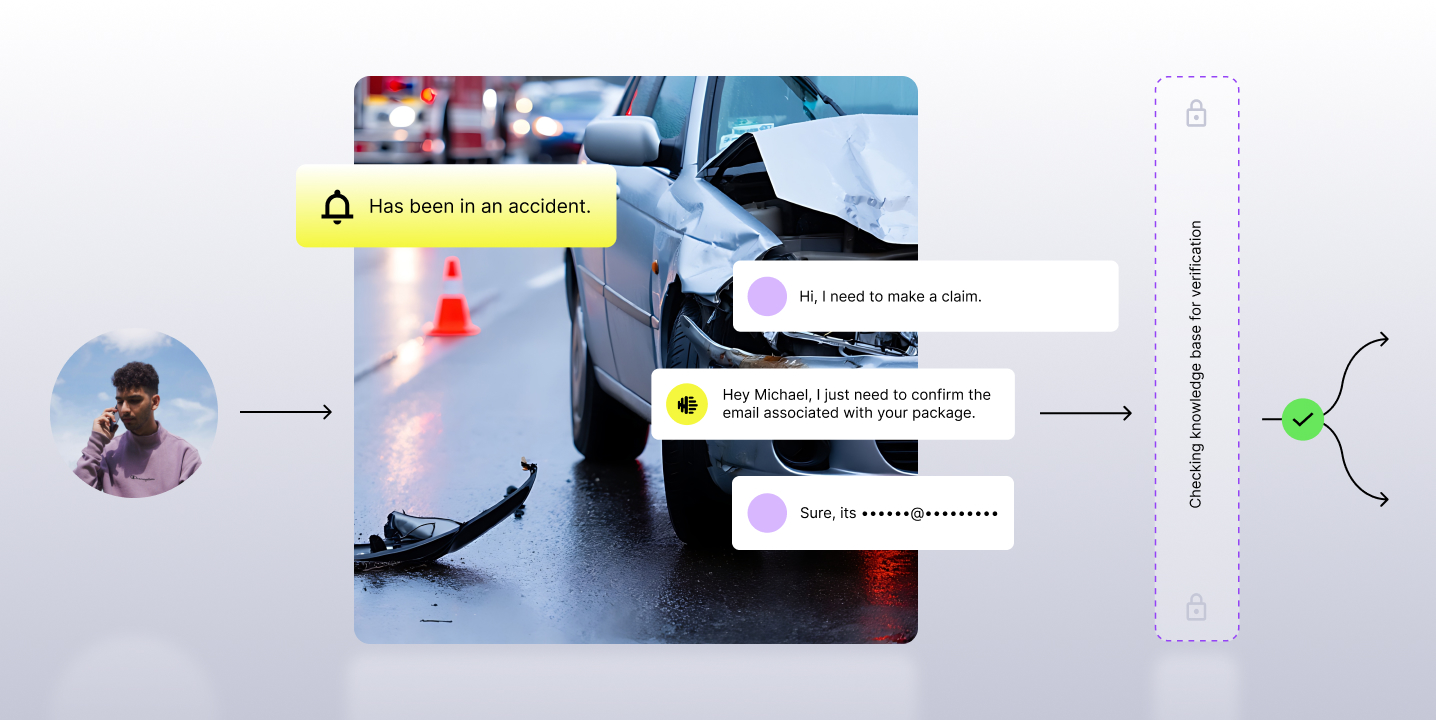“This call is being recorded for quality assurance purposes.” We’ve all heard this message before, but we know the sad truth:
The vast majority of contact centers only evaluate 2% of customer conversations, even though they know those conversations hold valuable, business-altering insights.

According to our survey of 300+ contact center leaders, 99% of respondents say they use insights from customer conversations to inform business decisions.
However, only about 1 in 3 respondents were completely satisfied with their level of visibility into those conversations.
Without visibility into what’s actually happening on the front line of your contact center, it’s nearly impossible to make data-driven decisions to improve performance and drive better business outcomes.
- How do you know what’s driving sales conversions?
- How do you know which agents are outperforming or underperforming?
- How do you provide targeted coaching to agents who need it?
To better understand how more visibility affects business outcomes, we analyzed how QA volume impacts agent performance.
We’re big believers in the power of visibility, so, while we aren’t surprised by these numbers, the data is striking.
How QA Volume Impacts Agent Performance
In our analysis, the value of visibility was evident.
.png)
When contact centers increased QA volume from 0.1% of calls to 19.15%, agent fail rates decreased by 20%.
Why?
When you have full visibility into what’s happening in customer conversations, leaders have a better understanding where to focus training and coaching.
This data-driven approach leads to better business outcomes as teams focus on the metrics and behavior that matter most.
Agents are the lifeblood of every contact center.
How they perform directly correlates to how the contact center performs.
Poor agent performance leads to low operational efficiency, poor customer satisfaction, and stalled revenue growth.
The opposite is true for high performing agents.
And the more you invest in targeted coaching for agents, the better the result.

According to our State of the Contact Center Conversation Intelligence report, companies with top performing agents are 4x more likely to feel prepared for the future.
But what’s the key to top performing agents? 80% of respondents with top performing agents said they had a formal coaching program, 4x more likely than those that do not.
Targeted agent coaching is key, and it starts with visibility into what’s actually happening on the front lines.
4 Ways to Increase QA Volume
If most contact centers only QA 2% of customer conversations, increasing to 20% of calls may seem daunting (although we have seen our customers get to 100%).
We get it.
But we’ve also seen our customers make significant headway and see massive business results.
Here are some ways we’ve seen contact center leaders, just like you, increase their QA volume and gain more visibility.
1. Increase QA Headcount
This may seem like a no-brainer, but it’s true. If you need to increase QA volume, one way to do it is to grow your QA team. Depending on the health of the business and whether or not your industry is considered “recession-proof,” the viability of this option will vary.
2. Refine Your QA Forms
Many teams’ QA forms have ballooned over the years for one reason or another. We see it all the time. Sometimes teams will be using templatized QA forms just because it’s industry-standard and they haven’t stopped to ask why they’re asking these questions and whether they impact the business.
By limiting the size and scope of your QA forms to only the questions that matter most to your business, you can reduce the time it takes for a QA manager to get through it.
3. Adopt QA Technology
For years, QA teams were using disconnected, manual, and inefficient spreadsheets to evaluate customer conversations. This is a painstakingly long process that is prone to inaccuracies. It’s time to take QA into the 21st century and embrace online workflows that are not only more user-friendly, but also connect to reporting and training interfaces as well.
We’re not the only ones that think so either. According to our report, quality assurance technology was ranked as the single most important technology for contact center leaders.
4. Automate Your QA Process
We have seen customers’ QA go from 0% to 100% by using automated quality management software, like Auto QA. I’m obviously biased, so I’m not going to sell you too hard on this, but you can learn more about it here, schedule a chat with one of our experts, and read how Figo is saving $700K a year with Auto QA..
Get More Contact Center Insights
For more contact center insights like these, subscribe to our newsletter and check out these resources:
- Observe.AI Insights: Keys to High Performing Agents
- Observe.AI Insights: The Power of Personalization
- Building a Resilient Contact Center: How Leaders Are Preparing for Economic Uncertainty
- State of Contact Center Conversation Intelligence

















